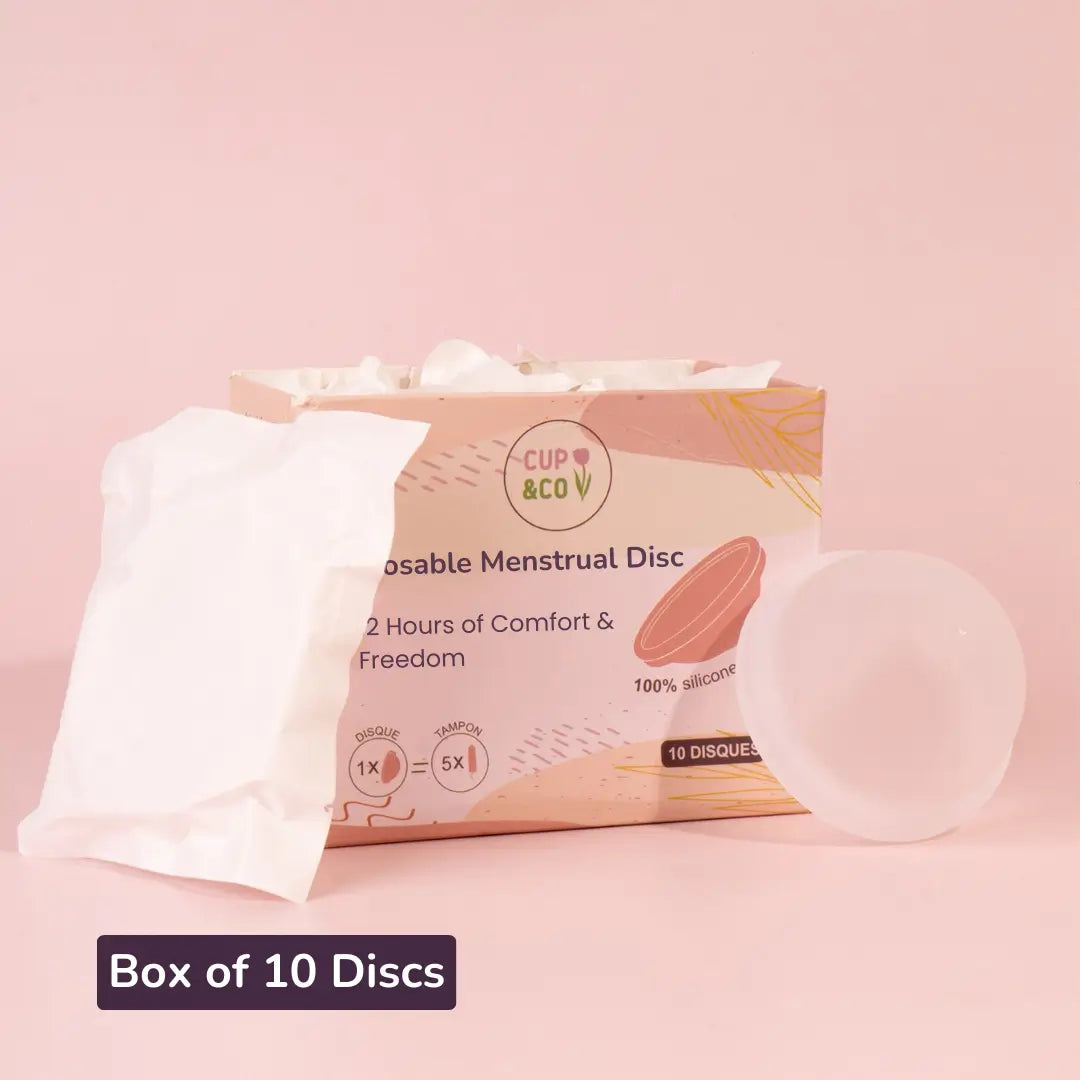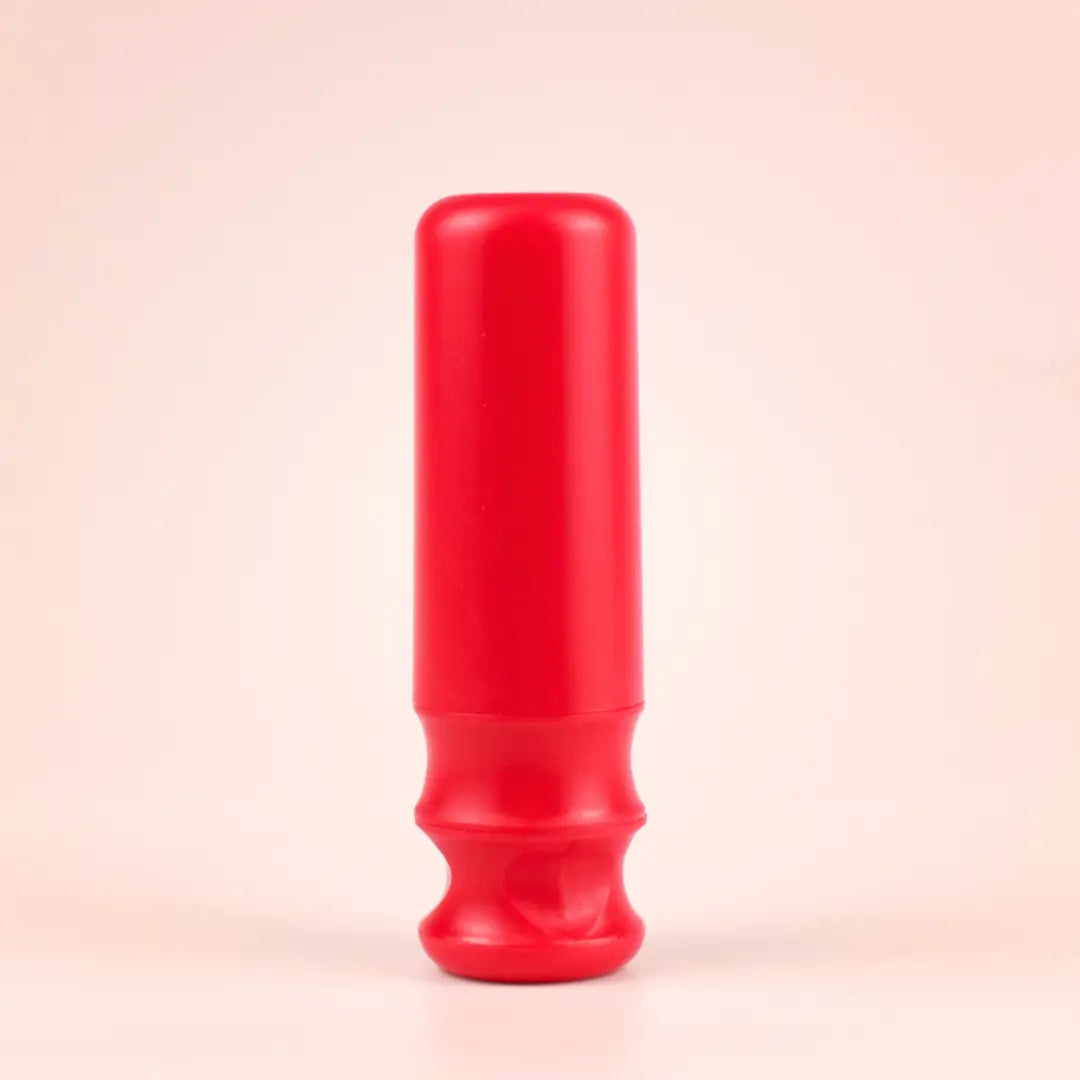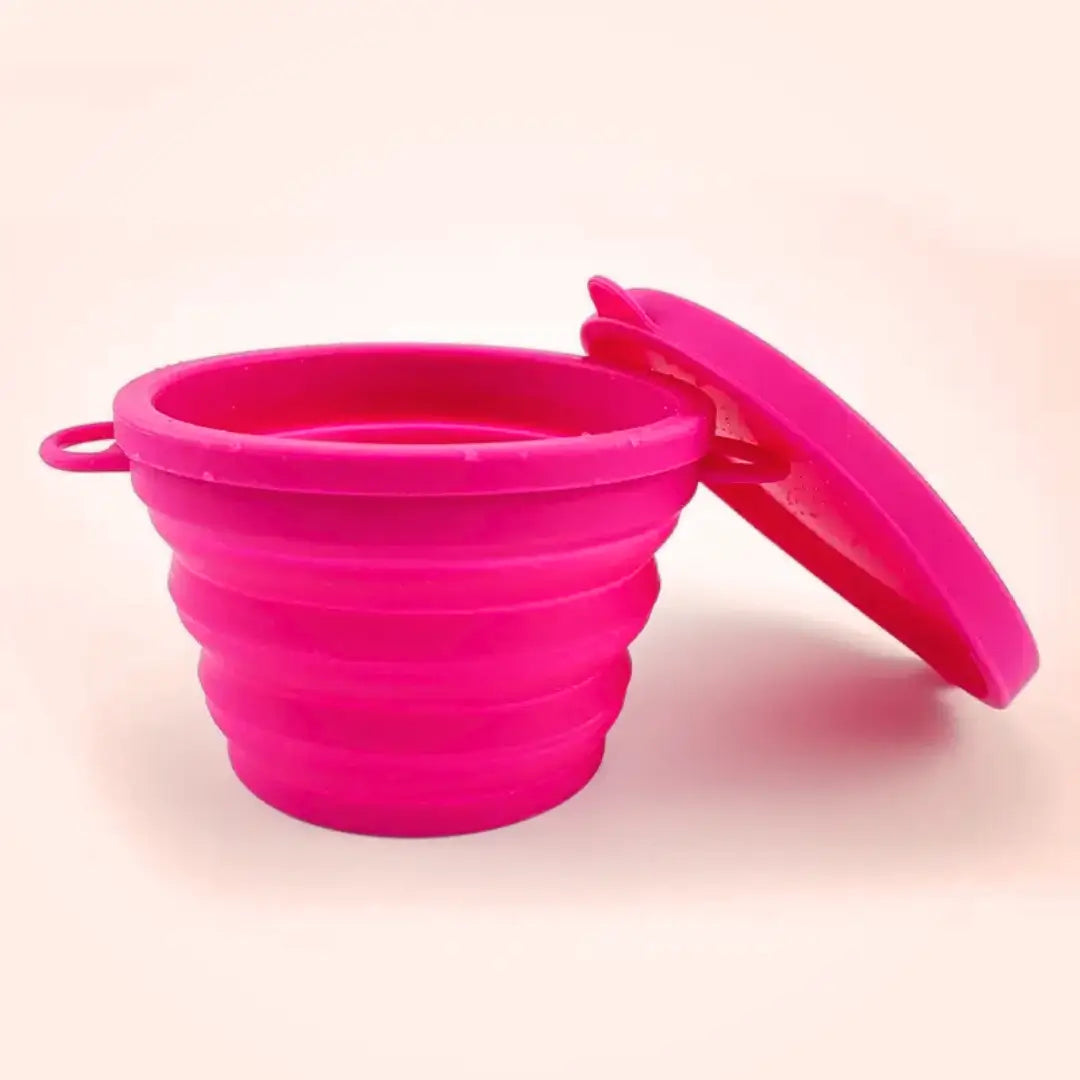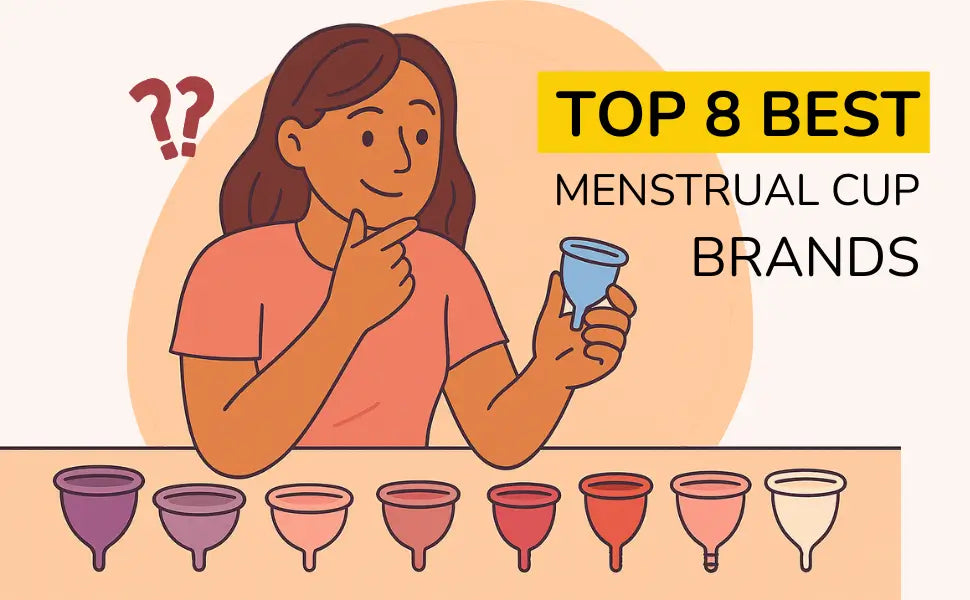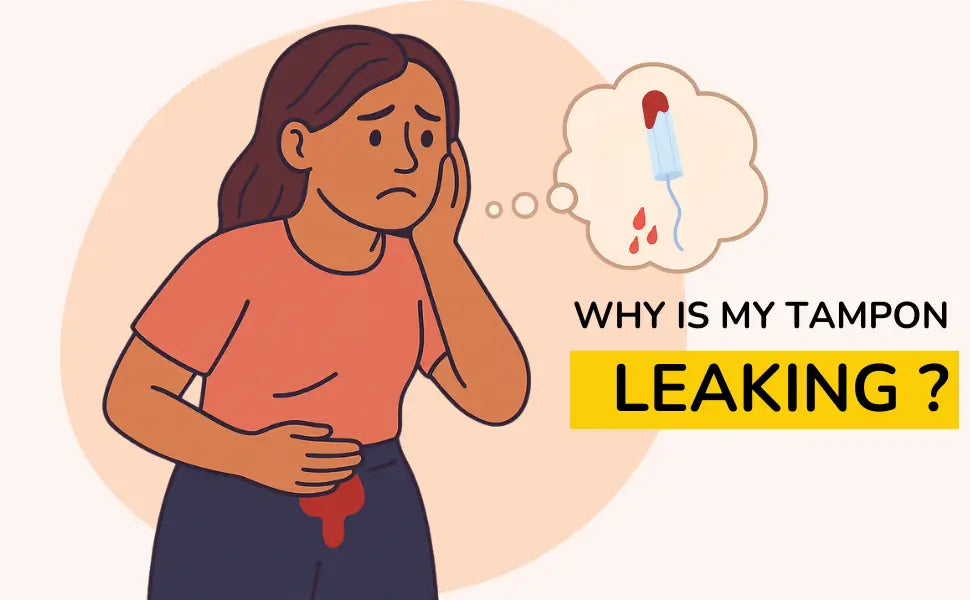Using a menstrual cup should not be painful. If you feel discomfort or pain, it's important to find the cause because pain is not normal.
There are several possible reasons behind it. We'll walk you through solutions, but if the pain continues or becomes too intense, we recommend stopping cup use and trying other menstrual products.
Reusable menstrual discs are a great alternative to menstrual cups. Based on feedback from disc users, most women report that their discomfort disappears once they switch to a disc.
Discomfort During Menstrual Cup Insertion
Dryness and Friction with the Cup
Causes:
Vaginal dryness can make inserting your menstrual cup hurt because of the extra friction. It can also make your vaginal walls less flexible, which can increase discomfort.
Solutions:
In this case, using a little water-based lubricant can help a lot. It reduces friction and makes insertion much smoother and more comfortable.
Another tip is to change how you fold your cup. The "pushdown fold" makes the cup smaller and easier to insert, and it's often more comfortable than the standard C-fold.
👉 Check out our menstrual cup usage guide.
If you're still having trouble inserting your cup, you can also use a menstrual cup applicator to make the process even easier.
If Your Cup Opens Too Low, It Can Cause Stomach Pain
Causes:

Make sure your menstrual cup is inserted deep enough into your vaginal canal before it fully opens. If it opens too low, it can cause discomfort or even stomach pain.
Solutions:
In that case, push the cup higher into your vaginal canal.
Also, avoid removing and reinserting the cup multiple times, as it could irritate your vaginal walls.
If Your Menstrual Cup Won't Go In
Low cervix cause:

If your cup feels stuck or won't go in easily, don't force it. You might have a low cervix, which can make using some cup sizes uncomfortable and can also lead to leaks.
In this case, switching to a smaller cup or trying a menstrual disc (which has a different shape) could be a better fit for your anatomy.
Vaginismus cause:
If you can't insert your cup at all, if even inserting a finger feels difficult, you might be experiencing vaginismus, which is when the vaginal muscles involuntarily contract to prevent penetration.
If you suspect this, it's best to talk to your doctor or a healthcare provider for personalized advice and possible treatment.
Discomfort and Cramping While Using a Menstrual Cup
Does your cup cause stomach, back pain or urge to pee ?
Causes:
If you're experiencing cramps, a frequent urge to pee, or pain in your lower abdomen or back, it could be a sign that your cup is too large, too wide, or too firm for your body.
A menstrual cup that's too stiff or big can put pressure on the walls of your vaginal canal and nearby organs, leading to discomfort or even pain.
Solutions:
Some people can tolerate firmer cups better than others, but if you're feeling this kind of discomfort, we recommend switching to a softer menstrual cup, or trying a menstrual disc, which is much more flexible and designed to be pain-free.
Your Menstrual Cup Is Causing Cervix Pain or sharp cramps
Causes:

If you're feeling intense, sharp cramps, it might be because your menstrual cup is touching or suctioning onto your cervix.
Sometimes, menstrual cups can shift and move higher up until they sit right against your cervix. This happens most often with smaller-sized cups because their width can completely seal around the cervix, creating unwanted suction.
Solutions:
If this happens to you, try switching to a wider cup so your cervix isn't pulled into the cup, or even better, try a menstrual disc. Unlike cups, discs don't create suction, which is one of the biggest differences between the two!
Stem Discomfort with Your Menstrual Cup

Sometimes, the stem of a menstrual cup can cause discomfort by pressing against your vaginal walls.
If that happens, you can trim the stem a little with scissors to make it shorter.
Alternatively, you can switch to a menstrual cup without a stem for a smoother, more comfortable fit.
Pain During Menstrual Cup Removal


Pain caused by suction
The cup stays in place thanks to suction. If you pull on the stem without first breaking the seal, the suction effect can cause sharp pain.
It's a common pain point mentioned in user reviews about menstrual cups.
Make sure to release the suction before removing your cup:
- Pinch the base of the cup to break the suction.
- Slowly and carefully pull the cup out of your vagina.
The cup feels wider during removal
Unlike insertion, when the cup is folded and slim, during removal, it returns to its full shape and becomes wider. This can make removal uncomfortable, especially with larger or firmer cups.
Unfortunately, aside from trying to relax, like applying a warm compress to your lower belly to ease muscle tension, there aren't many ways around this issue.
What to Do If the Pain Persists
If, despite trying all the solutions, using your menstrual cup remains painful or uncomfortable, we recommend stopping its use and switching to a protection better suited to your body.
For example, a reusable menstrual disc is a great alternative. It's very similar to a cup but sits in the fornix area, just below the cervix, a part of the body with fewer nerve endings. This makes the disc much more comfortable and generally pain-free compared to a cup.
We also offer disposable menstrual discs, which are much softer than a traditional menstrual cup.
If you experience intense pain, dizziness, headaches, or if your menstrual cup feels unsafe to use, stop using it immediately and consult your doctor.


